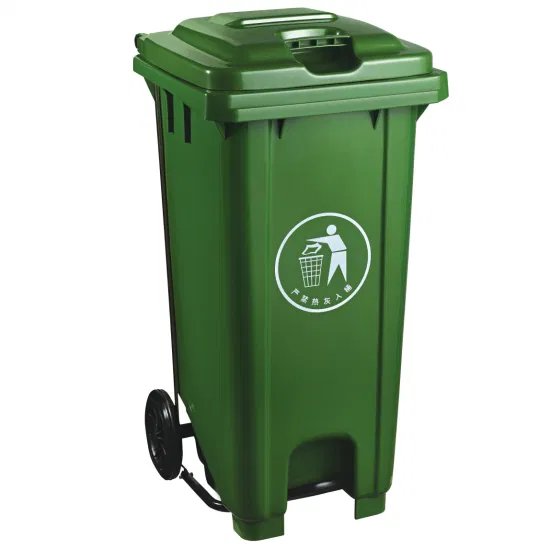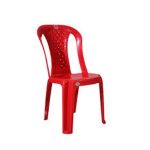To keep your home clean and organized, choosing the right dustbin is essential. With various sizes, designs, and features available in the market, finding the perfect fit can be overwhelming. By understanding your specific needs and the space available, you can efficiently select a dustbin that complements your lifestyle. Whether it’s for the kitchen, bathroom, or outdoor area, the right dustbin can make a significant difference in managing waste effectively. Let’s explore the world of dustbins and discover how to pick the ideal one for your home.
The Magic of Dustbins: A Comprehensive Guide to Keeping Your Environment Clean
Welcome, young environmental enthusiasts, to a world where a humble but mighty hero reigns supreme – the dustbin! Have you ever stopped to think about the importance of these seemingly ordinary containers in our daily lives? Let’s embark on a journey together to uncover the wonders of dustbins and how they play a crucial role in keeping our surroundings clean and healthy.
What is a Dustbin?
Before we delve deeper into the magical world of dustbins, let’s first understand what they are. A dustbin, also known as a trash can or garbage bin, is a container specifically designed for holding waste materials until they are disposed of properly. Dustbins come in various shapes and sizes, from small bins that fit under a desk to large outdoor bins found in parks and public spaces.
The Importance of Dustbins
Imagine a world without dustbins. Trash would be scattered everywhere, creating an unsightly and unhygienic environment. Dustbins are essential for collecting waste in an organized manner, preventing littering and the spread of diseases. By using dustbins, we can keep our surroundings clean and protect the planet for future generations.
1. Environmental Benefits
Proper waste disposal starts with using dustbins. When we throw our trash in the bin instead of on the ground, we are helping to reduce pollution and protect wildlife. Dustbins play a crucial role in waste management by facilitating recycling and composting efforts, ultimately leading to a healthier planet.
2. Health and Hygiene
Leaving trash lying around can attract pests and insects that carry diseases. Dustbins contain waste securely, preventing the spread of germs and keeping our homes and communities safe and healthy. By using dustbins, we can significantly reduce the risk of illnesses caused by improper waste disposal.
Types of Dustbins
Now that we understand the importance of dustbins, let’s explore the different types available and their unique features.
1. Indoor Dustbins
Indoor dustbins are typically smaller in size and come in various materials like plastic, metal, or even bamboo. These bins are designed to fit seamlessly into our homes, offices, or classrooms, making it convenient for us to dispose of everyday waste such as food scraps, paper, and packaging materials.
2. Outdoor Dustbins
Outdoor dustbins are larger and more robust, built to withstand various weather conditions. You can find them in public places like parks, streets, and playgrounds. These bins are essential for keeping public areas clean and encouraging responsible waste disposal among the community.
3. Recycling Bins
Recycling bins are specially designed to separate different types of recyclable materials such as paper, plastic, glass, and metal. By using recycling bins alongside regular dustbins, we can help reduce the amount of waste sent to landfills and conserve valuable resources.
How to Use a Dustbin Properly
Now that we know the importance of dustbins and the different types available, let’s learn how to use them effectively to maintain a clean and sustainable environment.
1. Sort Your Waste
Before tossing your trash into the bin, take a moment to separate recyclable materials from general waste. This simple act can make a significant difference in reducing the impact of waste on the environment.
2. Bag Your Waste
Use biodegradable or compostable bags to line your dustbin. This helps contain liquids and prevents odors, making it easier to empty and clean the bin when needed.
3. Compact Your Waste
If possible, crush or flatten items like plastic bottles and cardboard boxes before disposing of them. This not only maximizes the space in the bin but also makes it more efficient for waste collection and recycling processes.
4. Keep Your Dustbin Clean
Regularly clean your dustbin with mild soap and water to prevent odors and bacterial growth. A clean bin is not only more hygienic but also encourages you to continue using it responsibly.
Fun Facts About Dustbins
Now that we’ve mastered the art of using dustbins responsibly, let’s explore some fascinating facts that will make you appreciate these unsung heroes even more:
1. The World’s Largest Dustbin
The largest dustbin in the world is located in Dubai, standing at a towering height of 45 feet. This giant bin can hold up to 3,500 gallons of waste and serves as a testament to the importance of responsible waste management.
2. The Evolution of Dustbins
Early dustbins were made of woven baskets or wooden crates before the invention of modern plastic and metal bins. Over the years, dustbins have evolved to become more durable, efficient, and environmentally friendly.
3. Dustbins in Space
Even astronauts aboard the International Space Station have special dustbins to dispose of their waste in space. These high-tech bins use advanced technology to compact and store trash until it can be safely returned to Earth.
Congratulations, young environmental stewards, on completing this journey into the magical world of dustbins! Remember, these simple containers hold the key to keeping our planet clean, healthy, and sustainable for all living beings. By using dustbins responsibly and encouraging others to do the same, we can make a positive impact on our environment and create a brighter future for generations to come. So, let’s embrace the magic of dustbins and together, let’s keep our world sparkling clean!
Stainless steel dust bin in kenya 0700007552 #dustbin #wastebin
Frequently Asked Questions
What is the purpose of a dustbin?
A dustbin is used to collect and store waste materials such as food scraps, packaging, and other household items that need to be thrown away. It helps keep the surroundings clean and organized by providing a designated place for rubbish disposal.
How often should I empty my dustbin?
It is recommended to empty your dustbin regularly to prevent odors, pests, and overflowing rubbish. The frequency of emptying will depend on how quickly your bin fills up, but in general, it is advisable to empty it at least once a week, or more frequently if needed.
Can I recycle items in a dustbin?
No, a dustbin is specifically for non-recyclable waste. To promote recycling and reduce environmental impact, it is important to separate recyclable materials such as paper, plastic, glass, and metal, and place them in designated recycling bins or take them to a recycling center.
How should I clean my dustbin?
To clean your dustbin, first, empty it completely. Then, rinse it with water and a mild detergent to remove any residue or odors. You can also use a solution of vinegar and water for disinfecting. Make sure to dry the bin thoroughly before putting in a new trash bag.
Final Thoughts
In conclusion, the dustbin plays a crucial role in maintaining cleanliness and hygiene in our surroundings. Proper utilization of dustbins helps in reducing littering and keeping the environment clean. It is essential for everyone to dispose of waste responsibly by using dustbins provided in public spaces. Let’s all work together to ensure a cleaner and healthier environment by using the dustbin every day.



